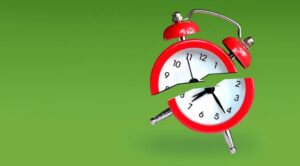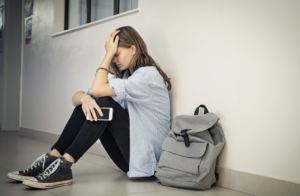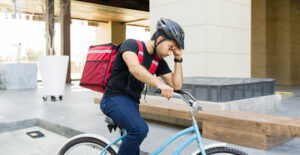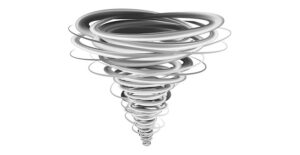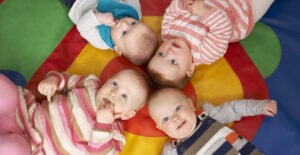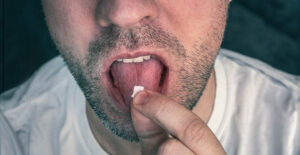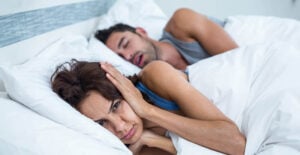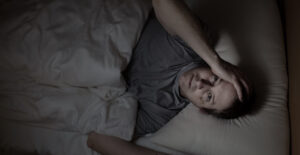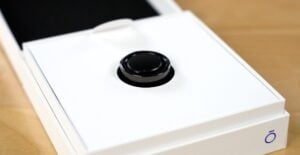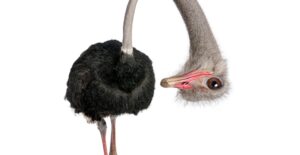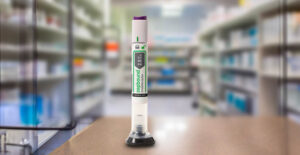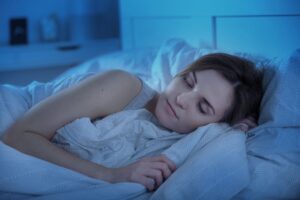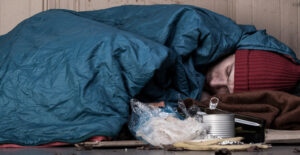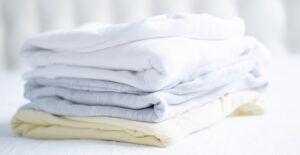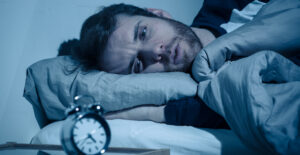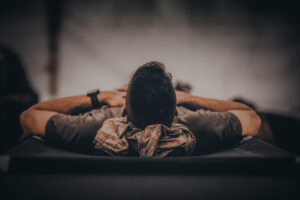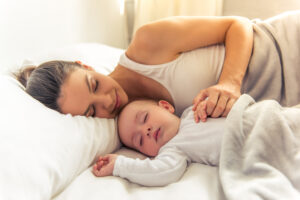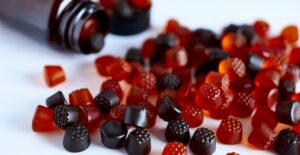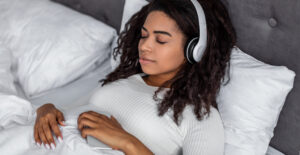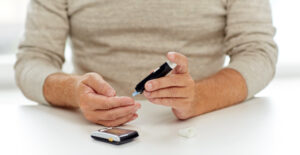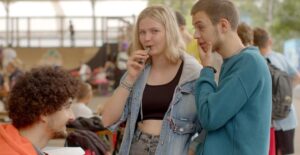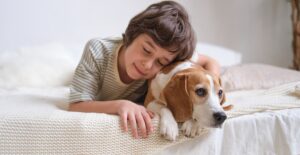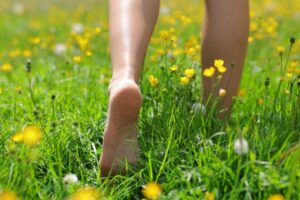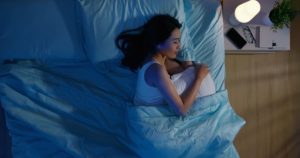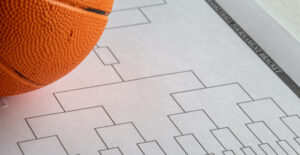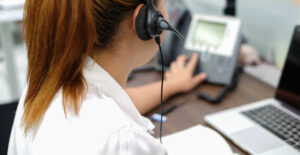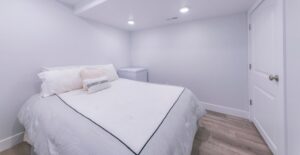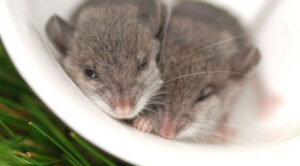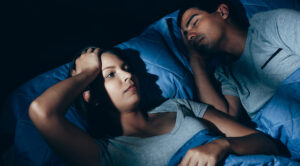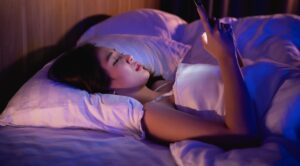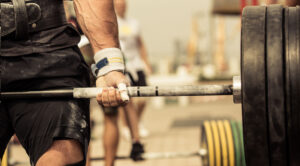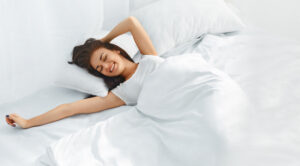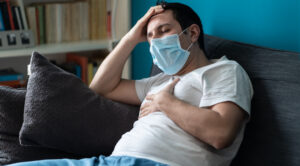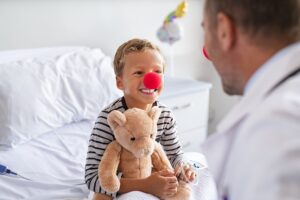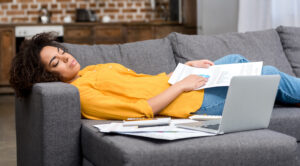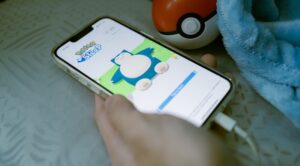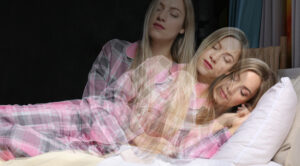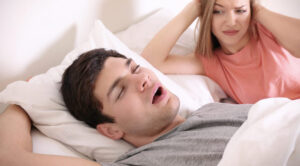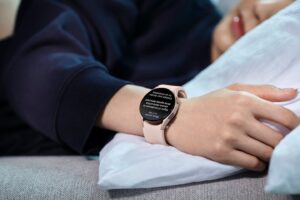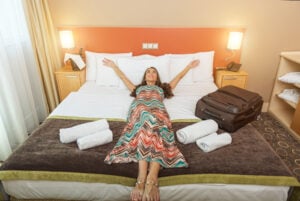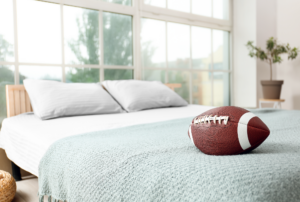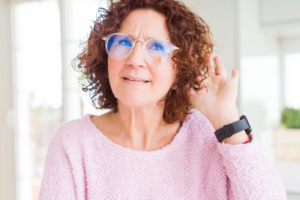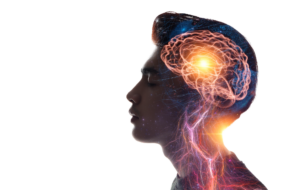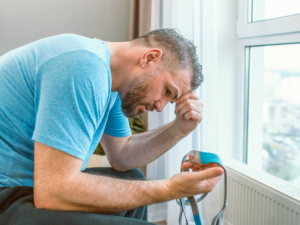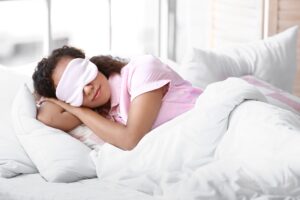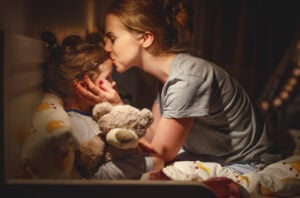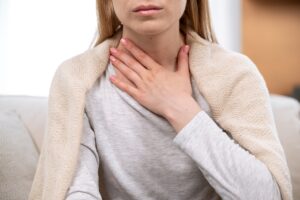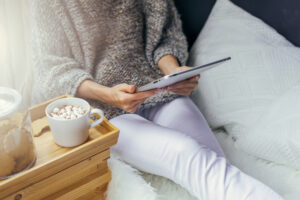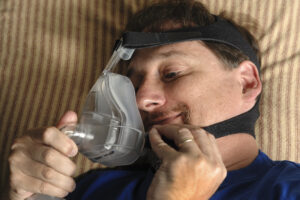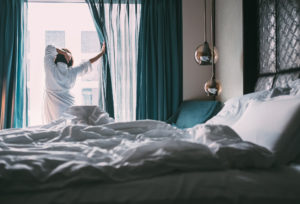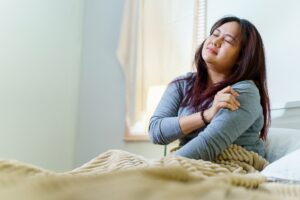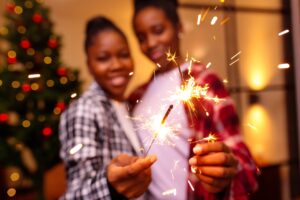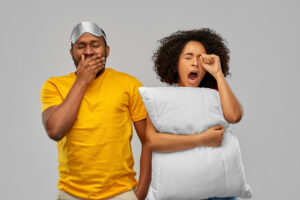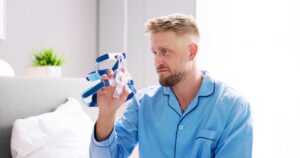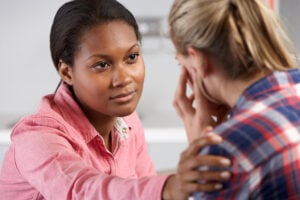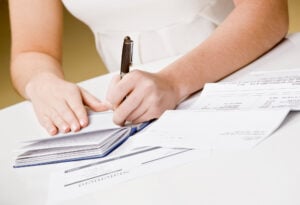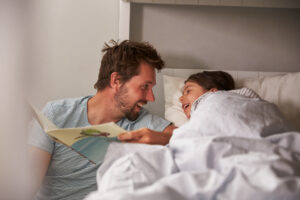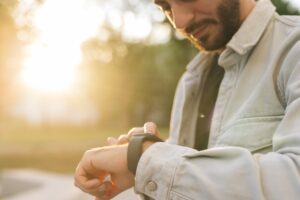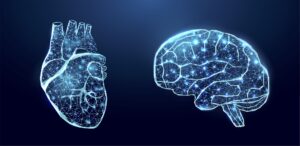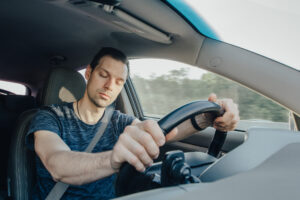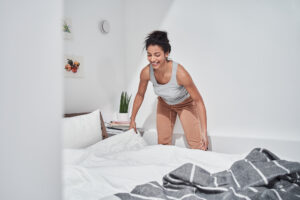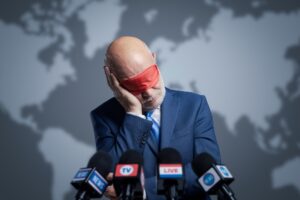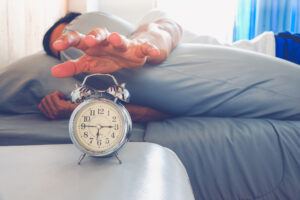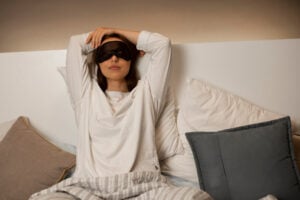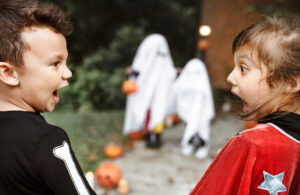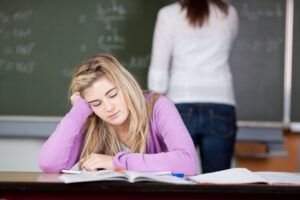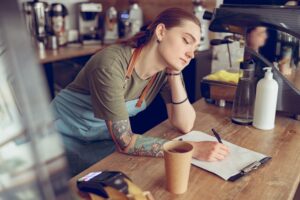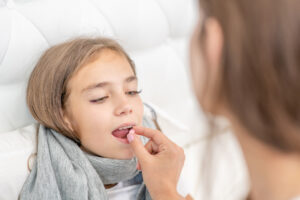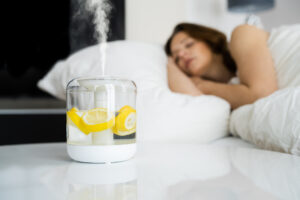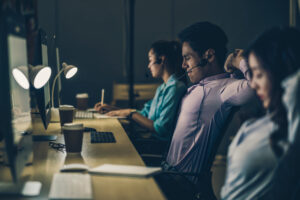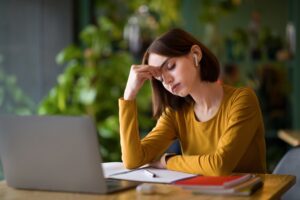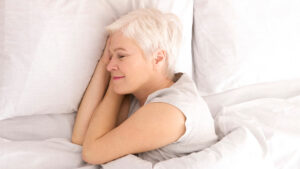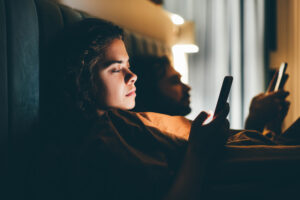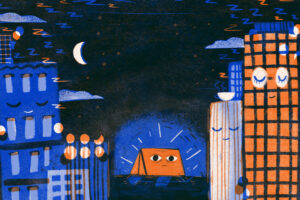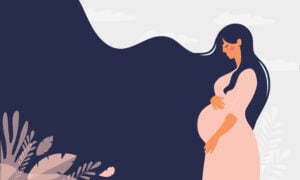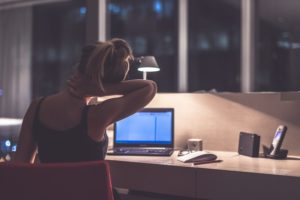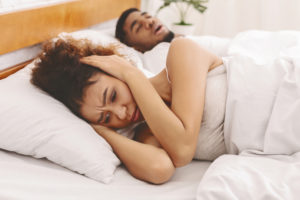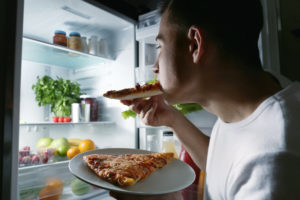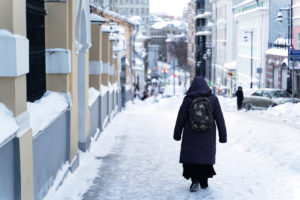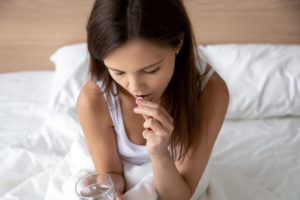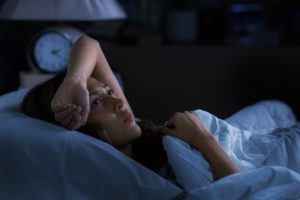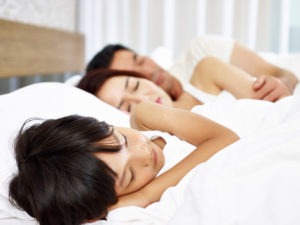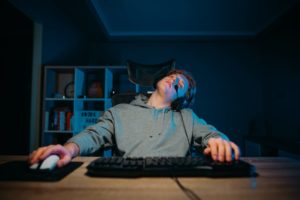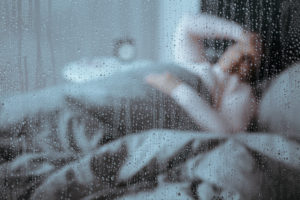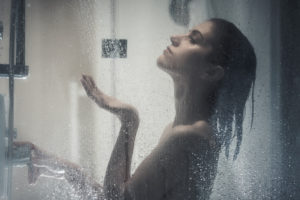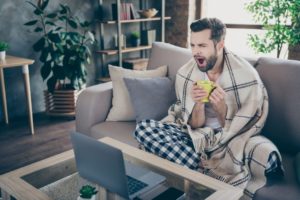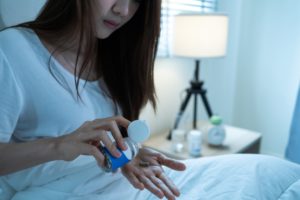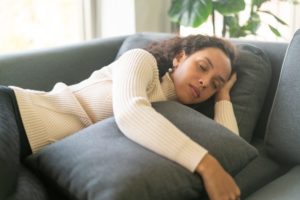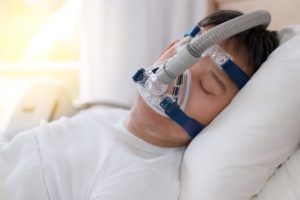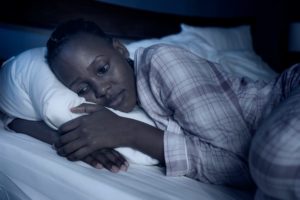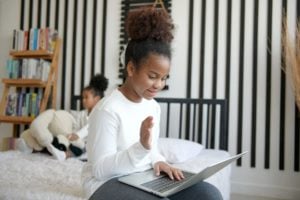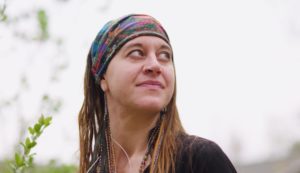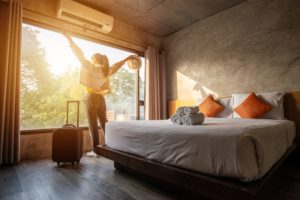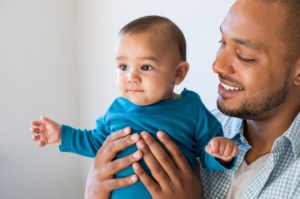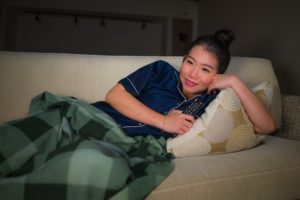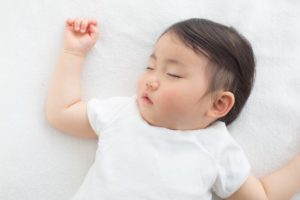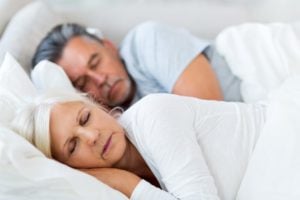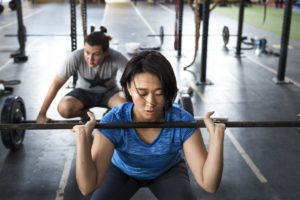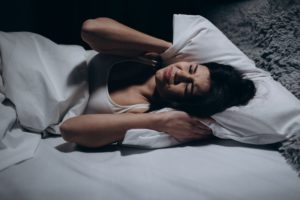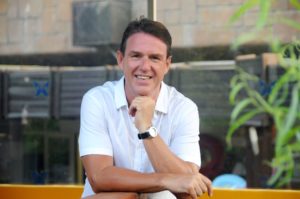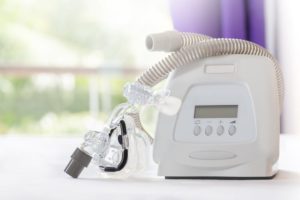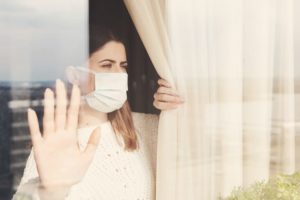Can Tracking Your Child’s Sleep Give a Look Into Their Upcoming Day?
What Is a Wearable? How Are Wearables Used?
Wearable technology — also known as “wearables” — refers to devices designed to be worn against the skin to collect data. The Apple Watch, Oura Ring, and Whoop Strap are some of the most popular fitness wearables on the market today that measure and compile vital signs, such as temperature, heart rate, average resting heart rate, and details about the sleep-wake cycle.
Earlier this year, I invested in the Oura Ring to track my own sleep data and physical activity. I wanted to better understand my circadian rhythm, the 24-hour cycle that wakes us up with the sunrise and prompts us to wind-down and fall asleep after sunset. Using a wearable can help us pay attention and make small adjustments to daily practices, like sticking to a bedtime routine. These adjustments can enormously impact our moods, attitudes, and cognitive function.
Using a wearable has helped me gain insight into and improve my sleep routines. My experience prompted me to wonder, if sleep-tracking wearables help adults make positive lifestyle adjustments, would sleep tracking be beneficial for children, too?
At-Home Experiment: Nine-Year-Old Meets Wearable
As the Editor-in-Chief of Sleep Foundation, I eat, breathe, and sleep… sleep! For this reason, I felt excited to see how a sleep-tracking wearable might impact my nine-year-old daughter. Tracking my own sleep and movement is incredibly helpful in informing my day’s activities. For example, I use data from my wearable to determine if I should push a little harder during my daily workout, or if I need to take it easier. Plus, I truly appreciate the reminder to start winding down for sleep. I wondered if my daughter’s experience would be the same.
My daughter is like a typical nine-year-old, but with more energy. She’s bright and bubbly some days, crabby and moody others, I asked if she thought it’d be fun if we strapped a wearable to her wrist 24/7. She agreed and even seemed excited. I hoped this at-home experiment would provide insight into what her day was going to look like. Could we predict her next day according to her daily sleep scores, sleep graphs, and daily energy output?
In our home, we have strict nighttime routines, complete with timepoints for activities like brushing teeth, ensuring we abide by bedtime. Because I am hyper-aware of sleep routines, proper sleep hygiene, and what stages of my sleep cycle I should be in throughout the night and when, I wondered if I could apply the data gathered by a wearable to my daughter.
Together, we decided on the Amazon Halo. The Halo is a relatively inexpensive fitness wearable that does not have a screen (score!) but tracks sleep. The Halo comes in three default band colors: black, silver, and light pink. There are also a variety of both fabric and silicone replacement bands available in many different colors. We settled on the color “unicorn,” a soft fabric band with light aqua and pink. Next, we downloaded the Amazon Halo app to my phone, and we were off!
My expectation was that if my daughter’s sleep scores were in the 90s — demonstrating that she cycled through four stages of sleep with optimal time spent in each — her mood, energy, and outlook for the day would be positive. Similarly, if her night’s sleep was poorer, the opposite would be true. I also believed that all of these outcomes would be proven by her movement score, with poorer sleep equaling less movement, while better sleep would result in more movement.

Mom Was Right (Isn’t She Always?): The Wearable Works
Beginning on day one, we checked my daughter’s sleep score as soon as she woke up in the morning. Her scores, on average, ranged from the 80s to mid-90s, so it was clear that her sleep duration was adequate. As I dove a little deeper into her graphs, however, I found that she was not quite hitting the numbers I’d like to see for deep, restorative sleep (Stage 3). As I tucked her in to bed one night, I actually said, “Be sure to tell your brain to hit about 10% more deep sleep.” The face she made in response was the equivalent of a “Huh?” It was worth a shot.
Stage 3 non-rapid eye movement sleep is also known as deep sleep, delta sleep, and slow-wave sleep. This stage usually occurs the most in the first half of the night. In this stage, muscle tone, pulse, and breathing rate are lessened as the body relaxes further. It is much more difficult to wake someone up from deep sleep than from other stages. Experts believe Stage 3 sleep plays a critical role in healing and growth, as well as memory and creativity.
Patterns: Poorer Sleep
Within a very short period of time, I noticed that when my daughter’s sleep score dipped below the mid-80s, she was more prone to early exhaustion, inattention at school (she was remote learning, so I saw it first-hand), and sluggishness. Her moodiness and attitude increased as well after lower quality sleep. Consequently, her activity scores also went down.
As I mentioned, my daughter is active — she enjoys running, jumping, bicycle riding, etc. Still, the lower her sleep score, the less likely she was to show her typical signs of wanting to get outside and play. Even when I pushed her to participate in physical activity, she immediately declined or bailed on the activity halfway through if she had a lower sleep score the night before.
“. . . the lower her sleep score, the less likely she was to show her typical signs of wanting to get outside and play.”
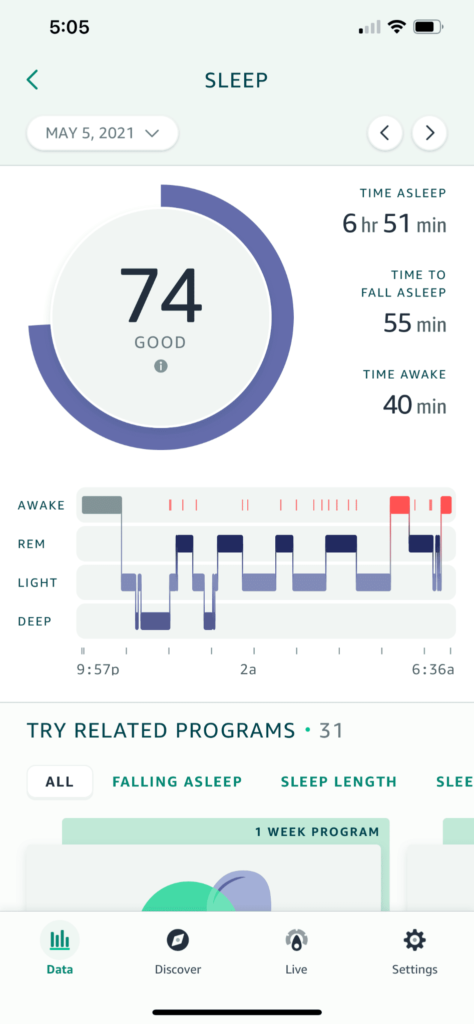
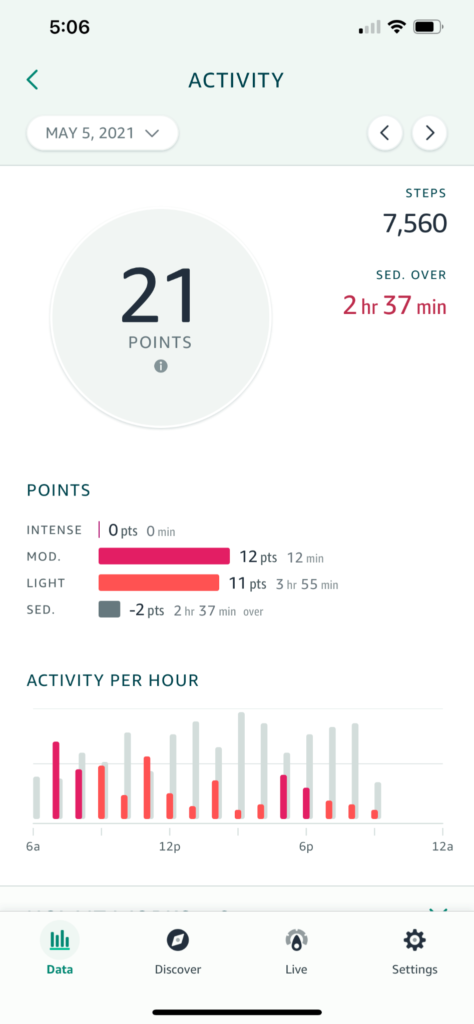
Screenshots of the Halo Sleep and Activity screens, demonstrating that a “good” night of sleep led to my daughter engaging in much less activity the next day than she would after a “great” night of sleep.
Patterns: Better Sleep
When my daughter’s sleep score hit 90 or more, she was exuberant the next day. After sleeping well, she easily engaged both in school and out, and had a far simpler time letting not-so-great aspects of her day roll off her back, like a math test that went sideways.
After sleeping well, her energy level was high, and her activity level was there to meet it. We had a much happier, livelier, and, frankly, easier-to-live-with child, who cheerily jumped into conversation as quickly as she did the trampoline. It was obvious I did not have to push her to be physically active during these days, as she would be the one pushing me!
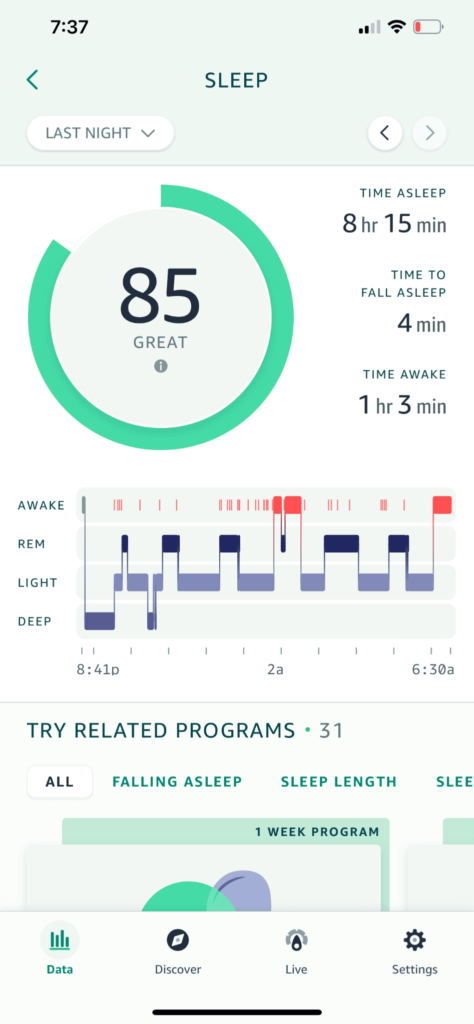
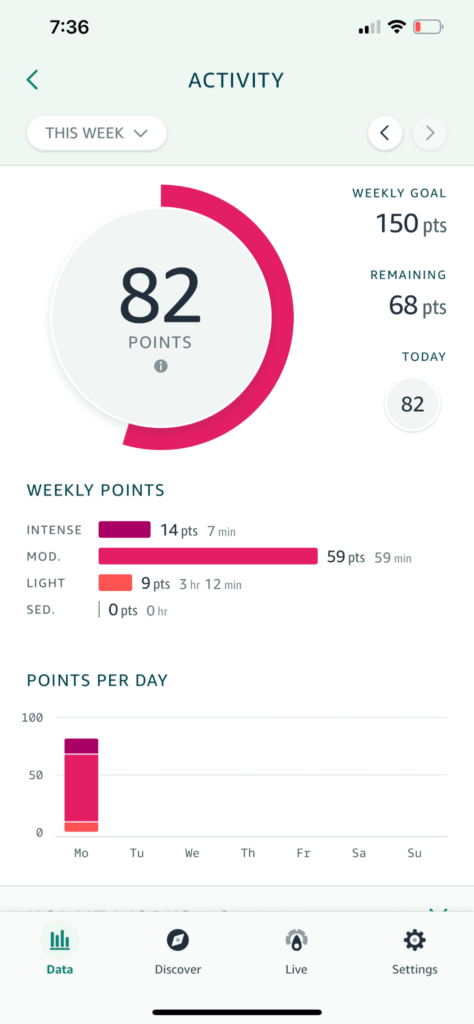
Screenshots of the Halo Sleep and Activity screens, demonstrating that a “great” night of sleep led to my daughter filling more than half of her weekly activity ring the next day, even with slight disruptions in the early morning hours.
My Takeaways: Sleep Matters
Over a matter of weeks, I was able to generally predict what my daughter’s day was going to look like by checking her sleep score when she woke up. It became easier to understand how she was feeling, anticipate bumps in the day, identify what potential triggers might be, and more comfortably help her navigate through to bedtime.
Using the Amazon Halo made it overwhelmingly obvious that bedtime was not something to be flimsy about. Weekend movie nights, which lead to later bedtimes, cemented what I had suspected the entire time: less sleep makes for a discombobulated next day.
What seem like small, late-night luxuries for children, such as watching a movie, playing a game, or having sleepovers, have a definitive impact on their next day. While the kids are having fun the night before, the next day may be met with tiredness and crankiness! This may even hold true for illness that disrupts an evening’s sleep, causing a little one to feel even more under-the-weather and in need of a nap the following day.
How Wearables Helped Me Relate to My Daughter
As a grown-up, I sometimes find it hard to remember what it was like being a kid. Adults can often have difficulty sympathizing with children because we perceive their problems as trivial compared with the problems we face. Too frequently, I am guilty of forgetting that children’s gripes are a big deal to them, even though they seem easy to solve for me.
This wearables experience changed me, maybe more than it changed my daughter. I found myself altering how I approached her right from the beginning of the day depending on how well she slept. If she didn’t sleep well or I noticed a lot of nighttime disturbances in her graph, I would allow her more leeway. Giving her the benefit of doubt seemed to ease the bumps we’d hit throughout our daytime hours together, and even allow us to have a quiet and calm drift into the evening.
“This wearables experience changed me, maybe more than it changed my daughter. I found myself altering how I approached her right from the beginning of the day depending on how well she slept.”
This insight into my daughter’s nine-year-old brain made me realize something so simple: we’re not that much different. When I’m not rested, I’m grumpy, crabby, and generally unpleasant. And, like her mom, my little girl is, too — but I had lost sight of that before a wearable helped me remember.
My Concluding Thoughts on Wearables for Kids
Although we received a lot of new information from the wearable, we did not change much in my daughter’s schedule — no cancelled weekend movie nights in favor of sleep on the weekends, for sure. She needs to be a kid and have those cheating-the-system moments! What this experiment really helped me understand, however, is how significantly sleep impacts her every day. It also taught me how to approach her during an off-day.
While our family chose the Amazon Halo for our experiment, there are numerous sleep trackers available that are appropriate for kids, such as the Garmin Vívofit Jr. 2 and Fitbit Ace 2 and 3. The data these trackers provide can offer a new perspective on your child’s daily and nightly routines and sleep quality.
Do I vote for every child being constantly analyzed for data? Certainly not. You have to do what makes you and your family comfortable. Wearables can be a gentle, fun, non-invasive way of gaining insight into your child’s inner workings. And, hey, now my daughter wakes up every morning and asks, “Can I check my sleep score?”
Additional Resources
How Much Sleep Do Babies and Kids Need?
Do Your Children Get Enough Sleep?

